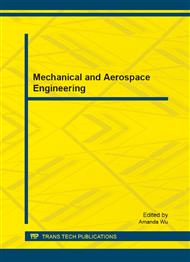p.111
p.117
p.122
p.127
p.132
p.137
p.142
p.147
p.152
Architectural Application of Smart Materials for Non-Flexible Structures Made by Flexible Formworks
Abstract:
Flexible formworks are dominantly used for concrete constructions. These constructions become rigid after curing and their form cannot be changed, also their color or translucency is stable during usage period; i.e. these constructions are not flexible. On the other hand, in order to satisfy new architectural requirements the necessity of flexibility and smartness is undeniable for the construction.The questions of this paper are: How smartness can be added to rigid structures What are the roles of nano-flexible formworks to turn non-flexible structures into flexible ones To answer the research questions, descriptive - analytical research method has been adopted and empirical data gathered to feed inference mechanism. Our investigation shows that if the flexible formwork has been made by smart materials which are changeable in nano-scale, and the formwork is left on the structure even after curing, it would act as a nano-flexible skin for the structure and would satisfy some architectural requirements in nano-scale.
Info:
Periodical:
Pages:
132-136
Citation:
Online since:
November 2012
Price:
Сopyright:
© 2012 Trans Tech Publications Ltd. All Rights Reserved
Share:
Citation:


